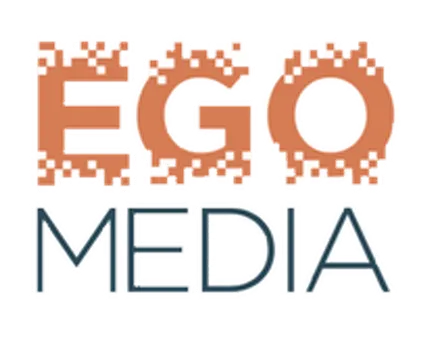Exploring 'ASMR' Culture
Typing the acronym 'ASMR' into YouTube now yields millions of ‘trigger videos’ designed to induce the pleasurable tingling sensation known as 'autonomous sensory meridian response'. Not everyone is susceptible to 'the tingles,' but for many who are ASMR videos have become an important means of managing fatigue, pain, insomnia and depression – and, for some, a key part of their identities. This page summarises my ASMR research and showcases the podcast I made with two 'ASMRtists'.
Introduction
The emergence of ASMR culture is a fascinating example of how digital platforms enable concepts and aesthetics to crystallise, communities to form and terminology to spread. Initially the ASMR community began using social media to exchange videos that happened to work as 'triggers’ - videos that often featured soft sounds, whispered speech, and subjects intently performing meticulous tasks. In due course ‘ASMRtists’ began creating videos of their own, using the metrics and feedback mechanisms built into social media platforms to tailor and refine trigger techniques. In recent years the aesthetic has been recuperated by advertisers, with agencies creating ASMR-style campaigns for clients ranging from IKEA1 to Kentucky Fried Chicken.2
As Dominic Pettman notes, many commentators have expressed surprise that videos so 'banal, obscure, and boring' to outsiders can affect some people so viscerally, to the point of generating a 'powerful form of sonic intimacy'.3 ASMR culture is also striking for its medicalized framing of identity and spectatorship. It was in response to a Steady Health forum thread4 that Jennifer Allen coined the term in 2009, in part because she felt that giving the syndrome a name that sounded ‘clinical’ would make it easier to talk about, helping to attract interest from researchers and to forestall associations with sexual fetishism5 (associations that most of those who experience ASMR vehemently reject).
My research is, among other things, a contribution to academic discussions concerning mediated intimacy, affective labour, and the commodification of care. Where ASMR discourse often deals in the deep time of human evolution, I am keen to show how ASMR’s emergence reflects the character of contemporary digital culture, seeing it in terms of a wider interest in using new media to regulate mood, increase productivity or achieve ‘better’ sleep. Within Ego Media, these aims resonate with Rachael Kent’s work on health and self-tracking, Mikka Lina Pers' work on mummy vlogging [LINK] and – insofar as those who experience ASMR have forged a collective identity around bodily susceptibilities and capacities that are beyond their control and poorly understood – the various strands of the team's research into epilepsy, in particular Rebecca Roach’s work on ‘black-boxed’ subjectivity [LINK].
This research resulted in two journal articles (one in Film Theory discussing ASMR aesthetics and the role of search engines and recommendation algorithms in the development of ASMR culture,6 and another in Convergence showing how first-hand accounts of ASMR draw on but also rework auto/biographical conventions,7 and in the podcast An Archive of Tingles (see below under the 'Activities' tab) Initially aired on Resonance FM in 2015 as part of the Arts and Culture Unit’s Modulations series, the project saw me collaborating with two UK-based ASMRtists, Emma (WhispersRed ASMR) and Ian (Muted Vocal), to discuss how ASMR fits into their identities, and consider its place in digital culture. You can find a transcript of the podcast under the Outputs tab below.
Podcast: An Archive of Tingles
An Archive of Tingles is structured around four short essays addressing online identity, the relationship between art and medicine, the voice, and questions of aesthetics and attention. These essays were written by me and delivered by Ian and Emma. One of the ideas behind this format was to give them an opportunity to demonstrate their ASMRtistry. Trigger videos often take the form of roleplays, where the ASMRtist might perform as, say, a doctor, a shop assistant or a hairdresser. I reasoned that roleplaying as an academic shouldn’t be too much of a stretch. Beyond that, the format also reflects my interest in the voice and vicariousness. I am sometimes uncomfortable with the way that academic writing conventions put me in the position of presuming to speak for online communities whose views may not align with my own. By putting my words in ASMRtists’ mouths and then giving them the chance to discuss my ‘readings’ of ASMR culture, I wanted to both dramatise and move beyond this model.
Endnotes
“Oddly IKEA”: IKEA ASMR - YouTube, accessed July 3, 2019, https://www.youtube.com/watch?v=uLFaj3Z_tWw. ↩
2. “KFChill,” KFChill, accessed July 3, 2019, http://kfchill.co.uk/.
3. Dominic Pettman, Sonic Intimacy: Voice, Species, Technics (or, How to Listen to the World) (Stanford, California: Stanford University Press, 2017). 20.
4. “WEIRD SENSATION FEELS GOOD - PART 2 | Nervous System Disorders and Diseases Discussions | Body & Health Conditions Center | SteadyHealth.Com,” accessed June 24, 2019, https://www.steadyhealth.com/topics/weird-sensation-feels-good-part-2.
5. Dr Richard, “Interview with Jennifer Allen, the Woman Who Coined the Term, ‘Autonomous Sensory Meridian Response’ (ASMR),” ASMR University, May 17, 2016, https://asmruniversity.com/2016/05/17/jennifer-allen-interview-coined-asmr/.
6. Rob Gallagher, “Eliciting Euphoria Online: The Aesthetics of ‘ASMR’ Video Culture,” Film Criticism 40, no. 2 (2016), https://doi.org/10.3998/fc.13761232.0040.202.|
7. Rob Gallagher, “‘ASMR’ Autobiographies and the (Life-)Writing of Digital Subjectivity,” Convergence 25, no. 2 (April 1, 2019): 260–77, https://doi.org/10.1177/1354856518818072.




